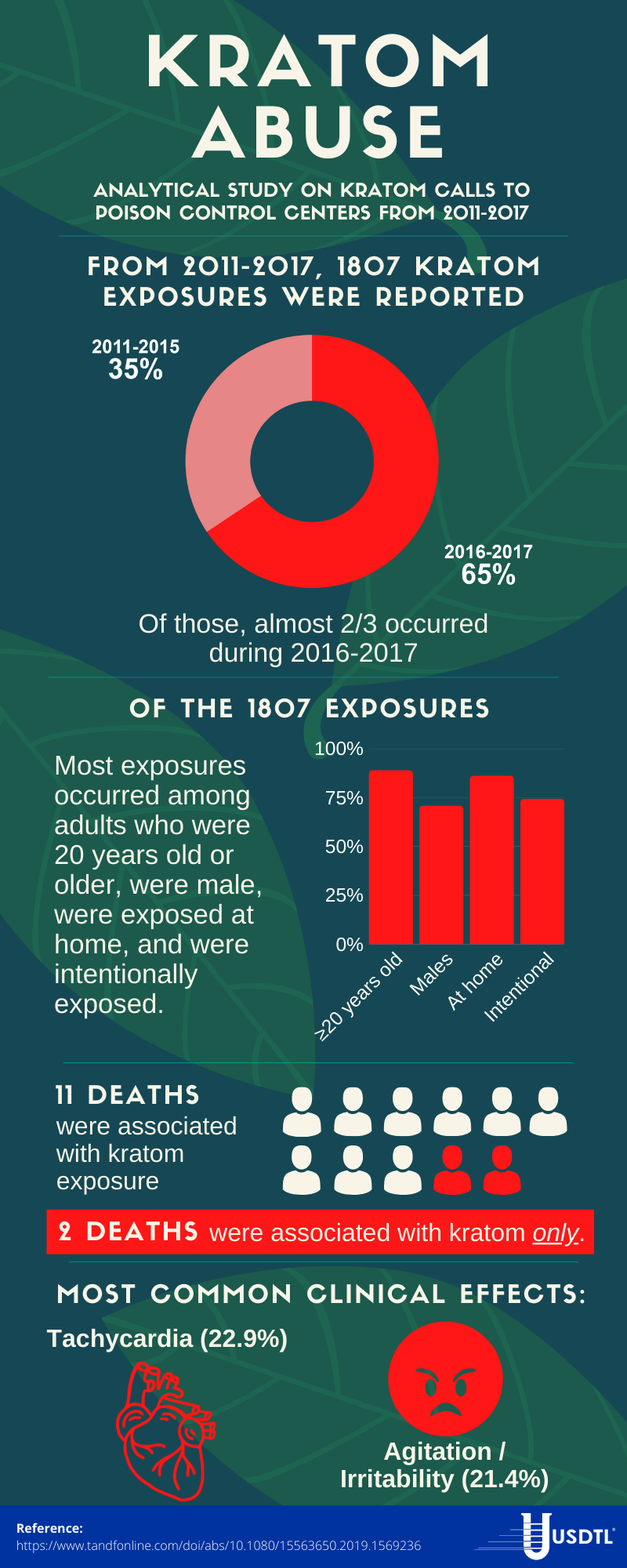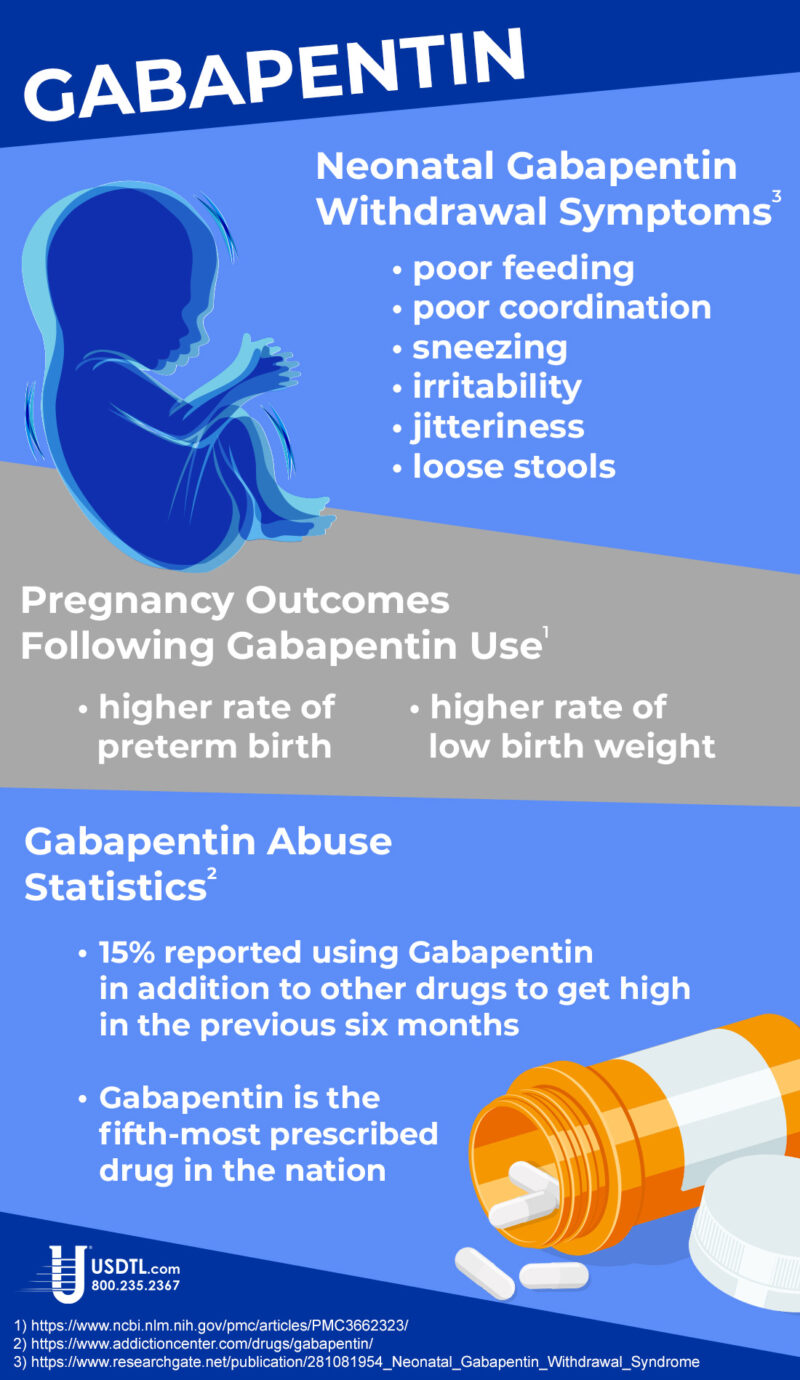Blog
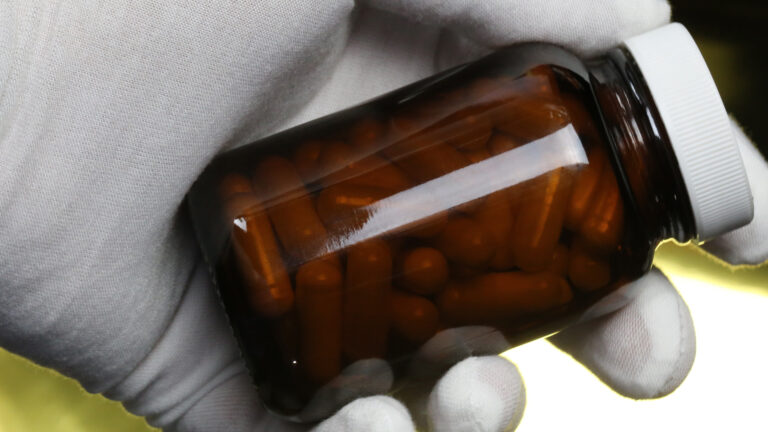
Gabapentin prescribing increased 64 percent from 39 million prescriptions in 2012 to 64 million by 2016, becoming the 10th most commonly prescribed medication in the United States.1
A recent study from the American Journal of Psychiatry disclosed that the number of Appalachian drug users who reported using gabapentin to get “high” has increased nearly 30-fold from 2008-2014.2 These alarming statistics among other supporting data significantly contributes to the reality that gabapentin is now considered an emerging threat in today’s opioid epidemic.4
What is Gabapentin?
Gabapentin, a gamma-aminobutyric acid (GABA) analog was originally developed as an anticonvulsant and prescribed as an analgesic for neuropathic pain. It is currently sold under the brand names: Neurontin®, Gralise®, Horizant®. The medication is also prescribed as an off-label medication for the treatment of migraines, mental illness, and fibromyalgia. Gabapentin first approved in the United States in 1993 with minimal potential for misuse is now classified as a controlled substance and a current drug of abuse.2 Gabapentin’s effects on the central nervous system including drowsiness and low-level euphoria have been recognized within the addiction community to enhance the euphoric effects of heroin and when consumed exclusively in high doses, produces a marijuana-like high.2 A study from 2016 found that gabapentin misuse was only 1 percent among the general population, however for those that misuse opioids, gabapentin misuse significantly increased to 15-22 percent.3
Side Effects
- Viral infection
- Fever
- Nausea and vomiting
- Trouble speaking
- Hostility
- Jerky Movements4
Gabapentin Overdoses
In 2017, 70,237 drug overdose deaths occurred in the United States, and a vast majority of those fatalities were directly related to opioids.1 In efforts to significantly reduce opioid abuse, providers began to increase their prescribing of gabapentin, with the understanding that the medication was a safer alternative to opioids for the management of acute pain. However, during 2013-2017, 74,175 gabapentin exposures were reported to poison control centers (PCCs) and a clear correlation was documented that the increase of accessibility to gabapentin directly increased toxic exposures.
According to data from the Louisville coroner’s office in Kentucky, gabapentin was found in nearly one-fourth of all overdoses. Throughout the state, the drug is now showing up in about 1 in every 3 overdose deaths.3 Due to the alarming rates of reported overdoses associated with gabapentin, states including Tennessee and Michigan have reclassified the drug as a Schedule V Controlled Substance. Massachusetts, Minnesota, Nebraska, North Dakota, Ohio, Virginia, West Virginia, and Wyoming also require reporting of gabapentin prescriptions through the Prescription Drug Monitoring Program (PDMP) database.
Respiratory Depression and Withdrawal
Drug-induced respiratory depression has been well documented with gabapentin use. The Federal Drug Administration (FDA) now requires new warning labels on all gabapentinoids regarding potential respiratory depressant effects. There is an increased risk for serious breathing difficulties among patients who use gabapentanoids alone or with other drugs that depress the central nervous system (CNS). Patients with a preexisting respiratory impairment such as chronic obstructive pulmonary disease (COPD) also have an augmented risk for experiencing respiratory distress with gabapentanoid usage.6 Additional health complications affiliated with continued gabapentin use occur with abrupt discontinuation of the medication, which has been documented to often mirror symptoms of those withdrawing from alcohol and benzodiazepines.7
Withdrawal Symptoms
- Anxiety
- Irritability
- Agitation
- Confusion
- Tachycardia
- Catatonia7
Co-Prescribing
Since gabapentin and opioids have historically been prescribed for pain, co-prescription of these two medications is quite prevalent. In a population-based nest case-control study among opioid users who were residents of Ontario, Canada between August 1, 1997, and December 31, 2013, it was found that among patients receiving prescription opioids, gabapentin was concomitant with a substantial increase to opioid-related deaths.5 The primary analysis of the study conveyed that the likelihood of opioid-related death was 49 percent higher among individuals exposed to gabapentin and opioids in comparison to those exposed to opioids solely.5 Approximately 8 percent of patients from the study receiving opioids were co-prescribed gabapentin and that co-prescription was directly linked to a 50 percent increase in death probability. Overall, similar studies conducted within the United States and the United Kingdom have drawn parallel conclusions that between 15 and 22 percent of people with opioid use disorder (OUD) are also misusing gabapentin.5
“Misuse of gabapentin is just one more collateral effect of the opioid epidemic. When one drug becomes less available, drug users historically seek out alternatives,” said Caleb Alexander, an epidemiologist at Johns Hopkins University.
In Utero Exposure
Studies are finding a definitive correlation to gabapentin and opioid use among pregnant mothers, as increases in co-exposure, are documented. In a study of 19 infants born to mothers who used opioids and gabapentin during pregnancy, 10 percent of those babies developed Neonatal Abstinence Syndrome (NAS). The failure to control gabapentin withdrawal symptoms with methadone exclusively, lead to gabapentin and methadone being administered congruently. The response from this combined medication-assisted treatment (MAT) showed rapid improvement with newborn withdrawal, indicating that the combined usage of opioid and gabapentin during pregnancy is evident.8
It is imperative that testing for licit drugs such as gabapentin becomes part of a healthcare system’s newborn toxicology testing protocol. It is our goal to continually adapt our offerings to support the systems that are addressing these issues for their population health.
Gabapentin Testing
We offer gabapentin testing in umbilical cord tissue. This specimen type captures substances in the newborn’s system up to approximately 20-weeks prior to birth. We also offer gabapentin testing in hair and nail. Hair offers a window of detection of up to approximately 3-months. Nail offer a windows of detection of up to approximately 3-6 months.
As a leader in forensic toxicology, it is our mission to provide the most comprehensive testing panels to meet the needs of our clients and to proactively address the current trends in today’s substance abuse landscape.
References
- Reynolds, K., Kaufman, R., Korenoski, A., Fennimore, L., Shulman, J. and Lynch, M. (2019). Trends in gabapentin and baclofen exposures reported to U.S. poison centers. [online] Taylor & Francis. Available at: https://www.tandfonline.com/doi/full/10.1080/15563650.2019.1687902 [Accessed 14 Feb. 2020].
- Vestal, C. (2018). Abuse of Opioid Alternative Gabapentin Is on the Rise. [online] Pewtrusts.org. Available at: https://www.pewtrusts.org/en/research-and-analysis/blogs/stateline/2018/05/10/abuse-of-opioid-alternative-gabapentin-is-on-the-rise [Accessed 14 Feb. 2020].
- Mammoser, G. (2019). Opioid Overdoses and Gabapentin. [online] Healthline. Available at: https://www.healthline.com/health-news/gabapentin-latest-pain-medication-in-opioid-overdoses [Accessed 14 Feb. 2020].
- Healthline. (n.d.). Gabapentin: Side Effects, Dosage, Uses, and More. [online] Available at: https://www.healthline.com/health/gabapentin-oral-capsule [Accessed 14 Feb. 2020].
- Gomes, T., Juurlink, D., Antoniou, T., Mamdani, M., Paterson, M. and Brink, W. (2017). Gabapentin, opioids, and the risk if opioid-related death: A population-based nested case-control study. [online] Public Library of Science. Available at: https://www.ncbi.nlm.nih.gov/pmc/articles/PMC5626029/ [Accessed 14 Feb. 2020].
- U.S. Food and Drug Administration. (2019). FDA requires new respiratory depression risk gabapentinoids warnings. [online] Available at: https://www.fda.gov/news-events/fda-brief/fda-brief-fda-requires-new-warnings-gabapentinoids-about-risk-respiratory-depression [Accessed 15 Feb. 2020].
- Medscape. (2010). Withdrawal Symptoms After Gabapentin Discontinuation. [online] Available at: https://www.medscape.com/viewarticle/722526 [Accessed 15 Feb. 2020].
- Loudin, S., Murray, S., Prunty, L., Davies, T., Evans, J. and Werthammer, J. (2017). An Atypical Withdrawal Syndrome in Neonates Prenatally Exposed to Gabapentin and Opioids. [online] jpeds.com. Available at: https://www.jpeds.com/article/S0022-3476(16)31232-X/fulltext [Accessed 17 Feb. 2020].
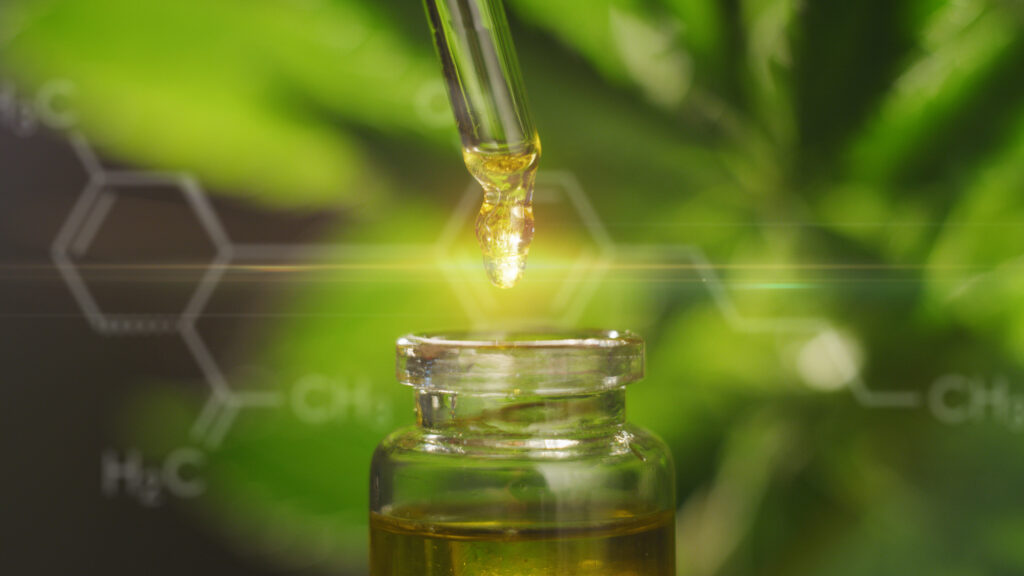
It is undeniable that the market for Cannabidiol (CBD) is booming, profits are generating at $2 billion in sales and projected to reach $16 billion by 2025.1
Seven percent of Americans are using CBD. That percentage is estimated to increase 10% by 2025, according to investment research firm Cowen & Co.1 Additional research published in the JAMA Network Open also documented that in April 2019, 6.4 million CBD Google searches were conducted.1
The ABCs of CBD
CBD and tetrahydrocannabinol (THC) are the primary natural compounds found within the cannabis plant, also known as phytocannabinoids.2 CBD is one of more than 80 active phytocannabinoids identified in marijuana and hemp.3
CBD’s chemical structure is very similar to THC (21 carbon atoms, 30 hydrogen atoms, and two oxygen atoms). However, the slight yet significant difference in the atom arrangement between these two compounds produce differing physiological effects.4
Both CBD and THC work with receptors that release neurotransmitters in the brain. These compounds interact with CB1 and CB2 receptors, which are located within the endocannabinoid system –an essential component to the human nervous system. CB1 receptors are located in the cerebellum of the brain that influences functions including memory processing, pain regulation, and motor control.5 The CB1 receptors are what also activate the euphoric effects from THC, whereas CBD has a very low effectiveness when it binds to CB1 receptors, producing insignificant to non-existent euphoric effects.6 CB2 receptors found on white blood cells, in the tonsils, and in the spleen also produce no euphoric effects. However, CB2 receptors have become increasingly popular due to their potential anti-inflammatory properties.5
Fact from Fiction
Both THC and CBD derive from the cannabis plant. Marijuana is defined as any cannabis sativa plant that has greater than 0.3 percent THC, which classifies the substance as a federally illegal, Schedule 1 drug by the Drug Enforcement Administration (DEA).7 Hemp plants are defined as any cannabis plant that has 0.3 percent or less THC and legal CBD originates from the hemp plant.7 The 2014 Farm Bill, national legislation permitting hemp research, began the process of hemp legalization. Within four years, the 2018 Farm Bill was enacted, fully legalizing the production and sale of hemp and its extracts.8 Agriculture of the hemp plant is primarily utilized for its CBD content, seeds, and fibers. Whereas, marijuana is usually grown for its psychoactive THC content.2 A single hemp plant can produce an estimated half kilogram of plant material for CBD extraction and farmers can legally grow up to 4,000 hemp plants in an acre. A single acre of hemp can generate about 1.4 million bottles of CBD lotion.8
Medicinal Benefits and Side Effects
According to the National Institute on Drug Abuse (NIDA), preclinical and clinical studies in animal models have shown potential therapeutic properties in CBD for the following: anti-seizure, antioxidant, neuroprotective, anti-inflammatory, analgesic, anti-tumor, anti–psychotic, anti-anxiety, and substance use disorders.3 Despite several studies eluding to CBD health benefits, currently, the only Food and Drug Administration (FDA) approved medicine containing CBD is Epidiolex. Within a series of scientific studies, CBD intake among those affected by childhood epilepsy syndromes, such as Dravet syndrome and Lennox-Gastaut syndrome (LGS) resulted in significant effectiveness compared to other unresponsive anti-seizure medication.9 Although CBD has revealed medical benefits, research has also documented possible side effects of CBD including nausea, diarrhea, upset stomach, tiredness, lightheadedness, crankiness, low blood pressure, and drowsiness.5
Safety
Aside from side effects, a significant concern regarding CBD is it’s primarily marketed and sold as a supplement, not a medication. The FDA does not regulate the safety or purity of dietary supplements; therefore unidentified elements may be found in products labeled as “pure” CBD.8 The FDA strictly prohibits the sale of CBD in any unapproved health products, dietary supplements or food.8 The FDA has issued warning letters to companies marketing products containing cannabis and cannabis-derived compounds as a treatment of any disease or condition. Firms making unsubstantiated claims regarding CBD are breaking the law. It is a direct violation to the Federal Food, Drug and Cosmetic Act (FD&C Act) and may put the health and safety of consumers at risk.10
Cultivation
Hemp, which is the only current legal plant for extracting CBD can accidentally cause breeding of marijuana by pollination of female and male plants. Due to this biological process, the University of Connecticut is adamant in maintaining all-female greenhouses.8 However, hemp grown outside of a controlled environment is much more susceptible to marijuana conversion. Pharmaceutical-grade extraction is imperative. The method for extracting CBD or THC is very similar, therefore if a supplier incorrectly extracts from the hemp plant, a CBD product may contain an illegal dose of THC.8 In efforts to prevent CBD products from being unknowingly contaminated with higher levels of THC, a process known as fractional distillation can be implemented, which isolates cannabinoids through temperature variation. With added heat, the evaporation of carbon dioxide and ethanol occurs, resulting in either pure CBD or THC.8
“What many consumers don’t realize is that the FDA, who’s charged with protecting our safety with respect to food and medicine in the U.S., is not on top of policing those CBD products that you see in the gas station or at the grocery store,” says Rino Ferrarese, COO of the medical marijuana extractor CT pharma.8
Pregnancy & Breastfeeding
According to a recent warning issued by the FDA, using products with CBD or THC is prohibited by women who are breastfeeding or pregnant. There is no comprehensive research studying the effects of CBD on the developing fetus, expectant mother, or breastfed baby.11 Studies have been conducted on pregnant animals and have shown complications with the reproductive system of developing male fetuses.12 Despite warnings, researchers who surveyed anesthesiologists, certified nurse-midwives, and doulas found the following:
- 7% of physician anesthesiologists would consider using CBD to reduce anxiety in women during pregnancy and labor.
- 12% would consider it to reduce nausea during pregnancy and 8% during labor.
- 13% would consider it to reduce pain during pregnancy and 12% during labor.
- 42% of certified nurse-midwives would consider using CBD to reduce anxiety in women during pregnancy, and 33% would consider it during labor.
- 54% of doulas would consider using CBD to reduce anxiety in women during pregnancy, and 44% would consider it during labor.13
Mark Zakowski M.D., FASA, senior author of the study and chief obstetrical anesthesiologist at Cedars-Sinai Medical Center, Los Angeles says, “That’s concerning because CBD may interact with commonly used anesthetics that might be needed during labor and delivery. And ongoing CBD use has shown the potential to act like a common class of antidepressants, SSRI inhibitors, which can adversely interact with other drugs.”13
Buyer Beware
Due to the abundance of unsubstantiated claims regarding CBD and the inconclusive research pertaining to the safety of its use, health experts and federal authorities are urging consumers to approach their use with extreme caution. Much of the CBD studies that have been conducted are preliminary research. Therefore, until further concrete evidence regarding the safety and complexity of CBD is concluded, it’s highly advised that all CBD or cannabis products be examined by an FDA review process.14
References:
- Usatoday.com. (2019). [online] Available at: https://www.usatoday.com/story/news/health/2019/10/23/cbd-google-searches-cannabidiol-skyrocket-do-products-works/4062879002/ [Accessed 14 Nov. 2019].
- Usatoday.com. (2019). [online] Available at: https://www.usatoday.com/story/sponsor-story/medterra/2019/10/01/what-cbd-oil-separate-facts-fiction-learn-truth-cbd/3786588002/ [Accessed 14 Nov. 2019].
- Drugabuse.gov. (2019). The Biology and Potential Therapeutic Effects of Cannabidiol. [online] Available at: https://www.drugabuse.gov/about-nida/legislative-activities/testimony-to-congress/2015/biology-potential-therapeutic-effects-cannabidiol [Accessed 14 Nov. 2019].
- WebMD. (2019). CBD vs. THC: What’s the Difference?. [online] Available at: https://www.webmd.com/pain-management/cbd-thc-difference#1 [Accessed 14 Nov. 2019].
- Dr. Ananya Mandal, M. (2019). Cannabinoid Receptors. [online] News-Medical.net. Available at: https://www.news-medical.net/health/Cannabinoid-Receptors.aspx [Accessed 22 Nov. 2019].
- Analytical Cannabis. (2019). CBD vs THC – What are the Main Differences?. [online] Available at: https://www.analyticalcannabis.com/articles/cbd-vs-thc-what-are-the-main-differences-297486 [Accessed 14 Nov. 2019].
- Analytical Cannabis. (2019). Hemp vs Marijuana: Is There a Difference?. [online] Available at: https://www.analyticalcannabis.com/articles/hemp-vs-marijuana-is-there-a-difference-311880 [Accessed 22 Nov. 2019].
- PBS NewsHour. (2019). Is CBD legal? Here’s what you need to know, according to science. [online] Available at: https://www.pbs.org/newshour/science/is-cbd-legal-heres-what-you-need-to-know-according-to-science [Accessed 14 Nov. 2019].
- Peter Grinspoon, M. (2019). Cannabidiol (CBD) — what we know and what we don’t – Harvard Health Blog. [online] Harvard Health Blog. Available at: https://www.health.harvard.edu/blog/cannabidiol-cbd-what-we-know-and-what-we-dont-2018082414476 [Accessed 15 Nov. 2019].
- U.S. Food and Drug Administration. (2019). FDA Regulation of Cannabis and Cannabis-Derived Products: Q&A. [online] Available at: https://www.fda.gov/news-events/public-health-focus/fda-regulation-cannabis-and-cannabis-derived-products-including-cannabidiol-cbd#statesallowing [Accessed 22 Nov. 2019].
- U.S. Food and Drug Administration. (2019). What You Should Know About Using CBD When Pregnant or Breastfeeding. [online] Available at: https://www.fda.gov/consumers/consumer-updates/what-you-should-know-about-using-cannabis-including-cbd-when-pregnant-or-breastfeeding [Accessed 16 Nov. 2019].
- DG, D. (2019). Maternal cannabinoid exposure. Effects on spermatogenesis in male offspring. – PubMed – NCBI. [online] Ncbi.nlm.nih.gov. Available at: https://www.ncbi.nlm.nih.gov/pubmed/3026968 [Accessed 16 Nov. 2019].
- Medicalxpress.com. (2019). Many women and health care providers assume CBD safe during pregnancy despite lack of research. [online] Available at: https://medicalxpress.com/news/2019-10-women-health-assume-cbd-safe.html [Accessed 16 Nov. 2019].
- NIH MedlinePlus Magazine. (2019). The ABCs of CBD: Separating fact from fiction | NIH MedlinePlus Magazine. [online] Available at: https://magazine.medlineplus.gov/article/the-abcs-of-cbd-separating-fact-from-fiction [Accessed 16 Nov. 2019].

By Adobe Stock©
As a country, we have found ourselves in the abyss of an addiction epidemic. Policymakers, law enforcement, and public health officials analyzing the true magnitude of this American crisis are faced with yet another public health concern—drug “alternatives”.
Kratom, native to the tropical tree Mitragyna speciose, is quickly gaining popularity among those seeking alternative solutions to treating opioid dependency. The plant’s leaves are known to contain compounds that produce psychotropic effects. It is currently listed as a “drug of concern” by The Drug Enforcement Administration (DEA) due to the substance’s similar addictive traits to opioids including risks of abuse, overdose, and fatality.1
In understanding the heightened concern regarding Kratom, a study published in the Journal of Clinical Toxicology found that calls to U.S. poison control centers increased more than 50-fold from 13 calls in 2011 to 682 calls in 2017 (equivalent from about one call a month to two calls a day).2 Of those calls, serious medical outcomes ranged from rapid heartbeat, agitation, irritability, and hypertension to seizures, coma, kidney failure, and death.
The added risk of Kratom in comparison to other substances of abuse is that it’s currently classified as an herbal supplement and not an illicit substance. According to the National Institute on Drug Abuse (NIDA), kratom is sometimes sold as a green powder in packets labeled “not for human consumption”,3 although kratom consumers report that the botanical supplement can be used for many things including minor pain as well as promoting a sense of health and well-being.
Kratom, available as a pill, capsule, or extract can work like an opioid or a stimulant. The two present compounds in its leaves-mitragynine and 7-a-hydroxymitragynine, interact with opioid receptors in the brain, producing sedation and pleasure while also minimizing pain.3 The chemical structure of kratom compounds binds strongly to opioid receptors similar to scheduled opioid drugs.4 Through scientific analyzation, kratom compounds are predicted to affect the body just like opioids, producing adverse side effects including seizures and respiratory depression.4
Regardless of these findings, kratom in recent years has been used as an herbal alternative for medical treatment in attempts to manage opioid withdrawal symptoms/cravings. In response, the Food and Drug Administration (FDA) in 2017 began issuing a series of warnings about kratom, along with identifying 44 deaths associated with its use.4 Supporting studies have found that similar to other drugs that emit opioid-like effects, kratom is subject to dependence and withdrawal symptoms including:
- Muscle aches
- Insomnia
- Irritability
- Hostility
- Aggression
- Emotional changes
- Runny nose
- Jerky movements3
In efforts to prevent new epidemics of abuse, the FDA is working diligently to educate, warn, and fight against how kratom is being misrepresented to the public. According to the FDA, there have been no adequate and well-controlled scientific studies involving the use of kratom as a treatment for opioid withdrawal or other diseases in humans. The substance is currently illegal in Australia, Denmark, Germany, Malaysia, and Thailand and banned in a number of states and municipalities in the U.S.5
To combat the use of kratom for treating serious diseases like opioid use disorder (OUD), the FDA has issued additional warning letters to unscrupulous vendors for marketing kratom products with scientifically unsubstantiated claims, which they find a clear violation of federal law. The American Kratom Association claims the contrary, in fact they have stated that kratom is regulated by the FDA as a dietary ingredient/supplement and nearly 5 million Americans safely use the substance.6
Understanding the true depth of the opioid epidemic requires a wealth of information regarding the various drugs that are involved and their risk factors. If a drug of concern or an alternative form of the drug is posing a potential health risk to your community, incorporating that drug into your substances of abuse testing efforts can provide a proactive, comprehensive, and advanced approach in addressing the prevalence of opioid use disorder within today’s substance abuse landscape. Kratom detection is available as an add-on to any urine panel and as part of the 18-panel test in hair or fingernail through USDTL.
References:
- “Poison control calls for kratom have soared in recent years.” (n.d.). Retrieved from https://www.cbsnews.com/news/kratom-poison-control-calls-soared-in-recent-years/
- (2019) “Kratom exposures reported to United States poison control centers: 2011–2017″, Clinical Toxicology, 57:10, 847-854, DOI: 10.1080/15563650.2019.1569236
- National Institute on Drug Abuse. (n.d.). “Kratom.” Retrieved from https://www.drugabuse.gov/publications/drugfacts/kratom
- Office of the Commissioner. (n.d.). Press Announcements – “Statement from FDA Commissioner Scott Gottlieb, M.D., on the agency’s scientific evidence on the presence of opioid compounds in kratom, underscoring its potential for abuse.” Retrieved from https://www.fda.gov/newsevents/newsroom/pressannouncements/ucm595622.htm
- Office of the Commissioner. (n.d.). Press Announcements – “Statement from FDA Commissioner Scott Gottlieb, M.D., on new warning letters FDA is issuing to companies marketing kratom with unproven medical claims; and the agency’s ongoing concerns about kratom.” Retrieved from https://www.fda.gov/NewsEvents/Newsroom/PressAnnouncements/ucm620106.htm
- “American Kratom Association.” (n.d.). Retrieved from https://www.americankratom.org/
 USDTL is honored to announce that our Assistant Laboratory Director of Research, Aileen Baldwin, Ph.D., MPH is a recent coauthor of two published peer-reviewed articles focused on the increased prevalence of prenatal alcohol exposure (PAE).
USDTL is honored to announce that our Assistant Laboratory Director of Research, Aileen Baldwin, Ph.D., MPH is a recent coauthor of two published peer-reviewed articles focused on the increased prevalence of prenatal alcohol exposure (PAE).
“Limitations of Nail and Hair Ethyl Glucuronide (EtG) Levels to Assess Maternal Alcohol Use,” was published in the Journal of Drug Dependence and Addiction in July 2019. The study was conducted at a maternity hospital in Montevideo, Uruguay between 2016-2017 in efforts to determine Ethyl Glucuronide (EtG) levels in nail and hair samples collected at the time of delivery in comparison to Phosphatidylethanol (PEth) levels. The research obtained from this analysis finds that EtG levels are of limited value for the assessment of maternal alcohol use during the third trimester of pregnancy or in determining a newborn’s risk for Fetal Alcohol Syndrome Disorder (FASD). This report also suggests PEth is the preferred method to detect alcohol use during the later stages of pregnancy.
In January 2020, “Prevalence of alcohol use in late pregnancy,” was published in Pediatric Research. The study highlights the increased prevalence of prenatal alcohol exposure (PAE) specifically in the state of West Virginia (WV) and identifies risk factors associated with PAE including smoking, preterm birth, lower gestational birth weight, and a reduction in breastfeeding. The findings from this study demonstrate that the detection of PEth in residual dried blood spots is an effective surveillance screening tool to improve methods for detection of prevalence estimate of PAE. The use of PEth screening can provide accurate and timely estimates of PAE, which is vital to inform public health workers, policymakers, researchers, and clinicians to develop and promote effective prevention strategies to lower PAE prevalence and provide targeted interventions and treatment services for infants affected by PAE.
This study was picked up by several news outlets, see them all on our In The News page.
Congratulations to Aileen and all of our research collaborators on your continued success in research development!
To read more, click on the publication links below:
- Limitations of Nail and Hair Ethyl Glucuronide (Etg) Levels to Assess Maternal Alcohol Use
- Prevalence of alcohol use in late pregnancy

Alcohol abuse, a historical public health concern, is gaining increased interest among medical professionals and analysts. Developing assessments are unveiling the significance of our country’s alcohol crisis despite overshadowing drug epidemics.
An estimated 88,000 people die from alcohol-related causes annually, which makes alcohol the third leading preventable cause of death in the United States.1 The prevalence of alcohol in our society is generating alarming statistics of abuse and death that can’t be ignored. According to the 2015 National Survey on Drug Abuse and Health, 15 million adults over the age of 18 and 600,000 of 12-17-year-olds have an alcohol use disorder.1
Alcohol Use Disorder (AUD) is a chronic relapsing brain disease characterized by compulsive alcohol use, loss of control over alcohol intake, and a negative emotional state when not using.2 AUD diagnosis is outlined in the Diagnostic and Statistical Manual of Mental Disorders (DSM) and its severity is categorized from mild to moderate, or severe. In efforts to identify an individual suffering from AUD the following symptoms may be present:
- Inability to limit the amount of alcohol consumed
- An increased time limit for drinking, getting alcohol, or recovering from alcohol use.
- Feeling a strong craving or urge to drink alcohol.
- Failing to fulfill major obligations at work, school, or home due to repeated alcohol use.
- Eliminating or reducing social and work activities, or hobbies
- Developing a tolerance to alcohol, causing an increased need for more to feel its effect or experiencing a reduced effect from the same amount.
- Subjected to withdrawal symptoms—such as nausea, sweating, and shaking when not drinking and often drinking to avoid these symptoms.3
AUD is more prone to develop during an individual’s early to mid-adult life, although the onset of the disorder can begin at any age. Certain risk factors can generate hazardous drinking behaviors including:
- Steady Drinking-drinking too much on a regular basis
- A Premature Introduction to Alcohol-putting individuals at a higher risk for AUD
- Family History-influenced genetic variables
- Mental Health-disorders including anxiety, depression, schizophrenia, or biopolar3
The identification process of AUD is an initial step in addressing a multi-faceted disorder—untreated AUD can lead to long-term health complications ranging from:
- liver disease, digestive, and heart problems
- diabetes complications
- sexual function and menstruation issues
- eye problems
- birth defects
- bone damage
- neurological complications
- weakened immune system
- increased risk of cancer
- medical and alcohol interactions3
Alcohol is currently a regulated and licit substance in the United States; therefore, it is imperative to adhere to the safe drinking recommendations put forth by health organizations monitoring its usage. According to the Center for Disease Control (CDC), the recommended consumption of alcohol for women is up to 1 drink a day and for men, up to 2 drinks a day.4 If you are under the age of 21, may be pregnant, or have other health problems —abstaining from drinking is strongly advised. In efforts to elaborate on moderating your drinking, understanding what constitutes a “drink” is crucial.
Defining A “Drink”
- 12-ounces of beer (5% alcohol content)
- 8-ounces of malt liquor (7% alcohol content)
- 5-ounces of wine (12% alcohol content)
- 1.5-ounces of 80 proof (40% alcohol content) distilled spirits or liquor (e.g., gin, rum, vodka, whiskey)4
Binge Drinking
Binge drinking is defined as a pattern of drinking that brings a person’s blood alcohol concentration (BAC) to 0.08 grams percent or above. This type of intoxication generally occurs when men consume 5 or more drinks or women consume 4 or more drinks in 2 hrs.5
Heavy Drinking
Heavy alcohol use is defined as binge drinking on 5 or more days within a month period.5
An Alcohol Epidemic
The depth of AUD in comparison to other national emergency drug epidemics has often gone underestimated, but in 2016, deaths caused by alcohol were more than double those involving opioids.6 The American Academy of Pediatrics (AAP), recommends adopting universal substance abuse screening, brief intervention, and referrals to treatment.6 Identifying adolescents who are at high risk for developing AUD by utilizing screening tools can help accurately predict problematic drinking behaviors. The National Institute on Alcohol Abuse and Alcoholism (NIAAA), have recently developed a two-question alcohol screening designed for middle school and high school students asking the following:
Middle School
- Do you have any friends who drank beer, wine, or any alcohol in the past year?
- How about you? In the past year how many days have you had more than a few sips of beer, wine, or any drink containing alcohol?
High School:
- In the past year, on how many days have you had more than a few sips of beer, wine, or any drink containing alcohol?
- If your friends drink, how many drinks do they drink on an occasion?7
The Importance of Utilizing Alcohol Assessment Tools
Administering evaluative tools in efforts to properly assess risky drinking behaviors can be a useful tactic. However, self-report reliability can become questionable –utilizing additional evidence-based measurements can assist in depicting the true magnitude of one’s drinking behaviors. Several studies have reported difficulties in measuring alcohol-related dependence using self-reporting tools, due to misinterpretation by respondents, lack of specificity, and misperception of AUD symptoms such as after-effects and acute intoxication.8 As a leading forensic toxicology laboratory, we provide alcohol biomarker testing to assist in identifying at-risk drinking behaviors. Our laboratory offers alcohol biomarkers in several specimen types including:
Newborn:
- Meconium-Fatty Acid Ethyl Ester (FAEE)-window of detection up to approximately 20 weeks prior to collection. (i.e., Birth)
- Umbilical Cord-Ethyl Glucuronide (EtG)-window of detection up to approximately 20 weeks prior to collection. (i.e., Birth)
- Blood– Phosphatidylethanol (PEth)-window of detection is up to approximately 2-4 weeks prior to collection.
Adult/Child:
- Fingernail-Ethyl Glucuronide (EtG)-window of detection is up to approximately 3 months prior to collection.
- Hair-Ethyl Glucuronide (EtG)-window of detection is up to approximately 3 months prior to collection.
- Blood-Phosphatidylethanol (PEth)-window of detection is up to approximately 2-4 weeks prior to collection.
- Urine-Ethyl Glucuronide/Ethyl Sulfate (EtG/EtS) and ethanol-window of detection is up to approximately 2-3 days prior to collection.
An estimated 16 million people in the United States have AUD.2 Incorporating detection methods to assist in identifying individuals exhibiting indicators of destructive drinking can create an effective awareness about AUD –a crisis that affects so many of us today.
Learn more about Umbilical Cord Testing Compare Our Adult Child Testing Contact Us to Learn More
References:
- “Alcohol Facts and Statistics.” (n.d.). Retrieved from https://www.niaaa.nih.gov/alcohol-health/overview-alcohol-consumption/alcohol-facts-and-statistics
- “Alcohol Use Disorder.” (n.d.). Retrieved from https://www.niaaa.nih.gov/alcohol-health/overview-alcohol-consumption/alcohol-use-disorders
- “Alcohol use disorder.” (2018, July 11). Retrieved from https://www.mayoclinic.org/diseases-conditions/alcohol-use-disorder/symptoms-causes/syc-20369243
- CDC – “Fact Sheets-Alcohol Use And Health” – Alcohol. (n.d.). Retrieved from https://www.cdc.gov/alcohol/fact-sheets/alcohol-use.htm
- CDC – “Fact Sheets-Binge Drinking” – Alcohol. (n.d.). Retrieved from https://www.cdc.gov/alcohol/fact-sheets/binge-drinking.htm
- Hadland, S. E., Knight, J. R., & Harris, S. K. (2019, March 01). “Alcohol Use Disorder: A Pediatric-Onset Condition Needing Early Detection and Intervention.” Retrieved from https://pediatrics.aappublications.org/content/143/3/e20183654
- Spirito, A., Bromberg, J. R., Casper, C., Chun, T. H., Mello, M. J., Dean, M., & Linakis, J. G. (2016, September 22). “Reliability and Validity of a Two-Question Alcohol Screen in the Pediatric Emergency Department.” Retrieved April 3, 2019, from https://pediatrics.aappublications.org/content/pediatrics/138/6/e20160691.full.pdf
- Iglesias, K., Sporkert, F., Daeppen, J., Gmel, G. and Baggio, S. (2018). Comparison of self-reported measures of alcohol-related dependence among young Swiss men: a study protocol for a cross-sectional controlled sample. [online] Available at: https://bmjopen.bmj.com/content/8/7/e023632 [Accessed 3 Feb. 2020].
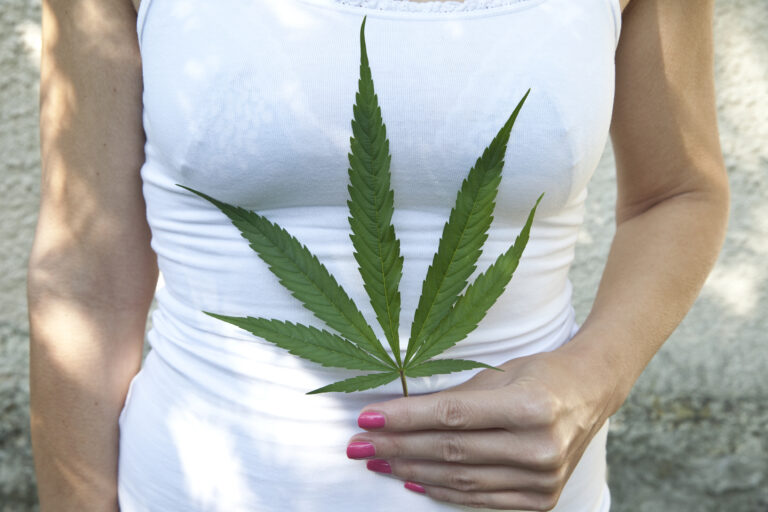
In 1996, California became the first state to pass legislation condoning the use of marijuana for medicinal purposes, and since the onset of that law, a powerful trend was set. Over 33 other states, including the District of Columbia, have now adopted various statutes for the permittance of recreational and medicinal marijuana. Although many government entities have sided that the benefits of the cannabis plant outweigh the risks, others are anxious that the ease of accessibility may cause an influx of misleading notions regarding the plant. Its exposure to vulnerable populations, including adolescents, those pregnant, or individuals suffering from preexisting psychiatric disorders continues to be a significant concern among communities.
The Impact of Legalization on Local Communities
In a cross-sectional marijuana dispensary density study from 2001-2012 in California, associations between marijuana abuse/dependence hospitalizations disclosed that an additional one dispensary per square mile was associated with a 6.8% increase in the number of marijuana hospitalizations. The study’s findings concluded that increased availability of marijuana in zip codes with a higher density of dispensaries continues to be a probable correlation to the increased hospitalizations in dispensary-dense areas.1
Despite this study and others, a recent CBS News Poll found that support for marijuana legalization has risen among groups that have historically opposed it. More than half of Republicans (56 percent) now think marijuana use should be legal due to reasons such as marijuana being less harmful than alcohol and believing it is less harmful than other drugs.2 However, increases in marijuana potency is triggering a valid fear that the levels of THC in today’s plants are more toxic than therapeutic.
Increased Potency, Increased Risks
As highly potent cannabis increases in availability, scientists who study marijuana and the effects it has to the human body are becoming disturbed with the increasingly high rates of potency in delta-9-tetrahydrocannabinol (THC)–the main compound responsible for the drug’s psychoactive effects. According to a U.S. Drug Enforcement Administration seize, the potency of marijuana has increased from about 4% THC in 1995 to about 12% in 2014. By 2017 marijuana samples were up to 17.1% THC, totaling an increase of more than 300% from 1995-2017. Concentrated cannabis products known as hash and hash oil are also reaching potency levels as high as 80-90% THC.3
Nora Volkow, Director of the National Institute on Drug Abuse (NIDA) states, “The notion that it is a completely safe drug is incorrect when you start to address the consequences of this very high content of Delta-9-THC.”
The levels of THC within cannabis is imperative when factoring the effects it can have on the body when consumed. Low THC levels have been known to have less adverse effects compared to high THC levels.
Low THC Content:
- Decreases Anxiety
- Treats Nausea
- Relaxation3
High THC Content:
- Panic Attacks
- Psychosis
- Paranoia
- Cannabinoid Hyperemesis Syndrome3
The Diagnostic and Statistical Manual of Mental Disorders (DSM-5) of the American Psychiatric Association now includes Cannabis Use Disorder (CUD) as a substance use disorder (SUD) diagnosis. Not all cannabis users develop CUD, however it is becoming more common than we think and can be serious. Normalizing use and reducing perception of harm can increase the development of CUD.4
DSM-5 Cannabis Withdrawal Symptoms:
- Anxiety, restlessness
- Depression, irritability
- Insomnia/odd dreams
- Physical symptoms, e.g.Tremors
- Decreased appetite4
In a longitudinal study published in Addiction, CUD was found to be significantly associated with psychotic and depressive symptoms.5
The Association Between Cannabis Use and Psychiatric Comorbidity
Cannabis use is recognized as a contributing factor for developing a psychotic disorder, children and teens with a family history of psychosis are most vulnerable.4
In a long-term prospective study, 1265 children born in Christchurch, New Zealand in 1977 were assessed repeatedly for psychosis symptoms due to daily exposure of cannabis in utero, which contributed to psychotic symptoms portrayed in these children at between the ages of 18-25. There was a significant correlation between cannabis use and later development of psychosis.4
A study conducted by Lancet Psychiatry found that three European cities–London, Paris, and Amsterdam, where high-potency weed is most prevalent, also have the highest rates of new cases of psychosis. The study indicates that daily pot users are three times more likely to endure a psychotic episode compared to an individual who has abstained from the substance.4
High potency forms of marijuana known as wax, butane hash oil, dabs, or shatter are growing in popularity and are more likely to induce psychotic states. The principal psychoactive component of cannabis is THC, which binds to cannabinoid-1 (CB-1) receptors found throughout the central nervous system. Studies specify that pure THC and CB1 agonists can produce psychotic symptoms including suspiciousness, paranoia, thought disorganization, and derealization.7
Marta Di Forti, lead author from the Institute of Psychiatry, Psychology, and Neuroscience at King’s College London says, “As the legal status of cannabis change in many countries and states, and as we consider the medicinal properties of some types of cannabis, it is of vital public health importance that we also consider the potential adverse effects that are associated with daily cannabis use, especially high potency varieties.”6
Maternal Marijuana Use
The adverse effects of marijuana can become extremely dangerous when the substance is used among those pregnant. According to the National Survey on Drug Use and Health, nearly 4% of pregnant women in 2007 and 2012 used marijuana in the past 30 days. Long-term neurobehavioral studies have shown that negative consequences have been found in children exposed to marijuana in utero such as altered neural functioning, behavioral deficits, emotional deficits, low academic achievement, and increased risk of adolescent substance use initiation.8
The uptick of marijuana legalization has generated a significant concern among obstetricians, gynecologists, and neonatal practitioners who are combating misleading claims that marijuana use during pregnancy is safe. According to the Center for Disease Control and Prevention (CDC), about 1 in 25 women in the U.S. report using marijuana while pregnant, despite the fact that marijuana use during pregnancy may increase the baby’s risk of developmental problems and low birth weight.9 The American College of Obstetricians and Gynecologists (ACOG) recommends that obstetrician-gynecologists counsel women against using marijuana while trying to get pregnant, during pregnancy, and while breastfeeding.10 Studies have found that cannabinoid receptors appear in the fetal brain around the 14th week of gestation and are located in areas where cognitive and behavioral functioning develop.11
According to a qualitative study, women reported that although they were consistently seeking prenatal care throughout their pregnancy, information and resources regarding maternal marijuana use was either not helpful or non-existent, resulting in the assumption that marijuana did not pose a significant threat to a developing fetus.12 The study concludes that absenteeism of perinatal marijuana education can lead to an increase of use among pregnant women.12
Testing for Abuse
Cannabis is not a harmless substance. It has been found to have addictive properties, which can lead to impairments and cause serious health risks. Our tests are designed to identify the detection of short-term and long-term marijuana usage. Each available specimen type provides a unique window of detection.
- Hair: Up to approximately 3 months prior to collection.
- Nail: Up to approximately 3-6 months prior to collection.
- Umbilical Cord: Up to approximately 20 weeks prior to birth.
- Meconium: Up to approximately 20 weeks prior to birth.
- Urine: Up to approximately 2-3 days prior to collection.
We believe that to remain at the forefront of toxicology, it is imperative to offer testing services for all substances that may pose an increased risk for abuse and dependence. Our continued investment in developing and implementing testing for drug ingestion and exposure helps us address substances that most concern you.
References:
- Mair, C., Freisthler, B., Ponicki, W. R., & Gaidus, A. (2015, September 01). “The impacts of marijuana dispensary density and neighborhood ecology on marijuana abuse and dependence.” Retrieved from https://www.ncbi.nlm.nih.gov/pmc/articles/PMC4536157/
- “Support for marijuana legalization hits new high, CBS News poll finds.” (n.d.). Retrieved from https://www.cbsnews.com/news/support-for-marijuana-legalization-hits-new-high-cbs-news-poll-finds/
- Chatterjee, R. (2019, May 15). “Highly Potent Weed Has Swept The Market, Raising Concerns About Health Risks.” Retrieved from https://www.npr.org/sections/health-shots/2019/05/15/723656629/highly-potent-weed-has-swept-the-market-raising-concerns-about-health-risks
- Hasin, D. S. (2018, January). “US Epidemiology of Cannabis Use and Associated Problems.” Retrieved from https://www.ncbi.nlm.nih.gov/pmc/articles/PMC5719106/
- Pond, E. (2019, January 28). “Cannabis Use, Cannabis Use Disorder Linked to Psychotic, Depressive Symptoms.” Retrieved from https://www.psychiatryadvisor.com/home/topics/addiction/cannabis-use-cannabis-use-disorder-linked-to-psychotic-depressive-symptoms/
- Robinson, J. (2019, March 20). “Daily use of high-potency cannabis increases risk of psychosis by four times, study finds.” Retrieved from https://www.pharmaceutical-journal.com/news-and-analysis/news/daily-use-of-high-potency-cannabis-increases-risk-of-psychosis-by-four-times-study-finds/20206308.article?firstPass=false
- Corey J. Keller, Evan C. Chen, Kimberly Brodsky & Jong H. Yoon(2016)“A case of butane hash oil (marijuana wax)–induced psychosis, Substance Abuse”, 37:3, 384-386, DOI: 10.1080/08897077.2016.1141153
- Jones, J. (2018).“Medical Marijuana Laws and Maternal Marijuana Use.” Des Plaines, IL: Archives of Women Health and Care.
- “What You Need to Know About Marijuana Use and Pregnancy” | Fact Sheets | CDC. (n.d.). Retrieved from https://www.cdc.gov/marijuana/factsheets/pregnancy.htm
- National Institute on Drug Abuse. (n.d.).“Can marijuana use during and after pregnancy harm the baby?” Retrieved from https://www.drugabuse.gov/publications/research-reports/marijuana/can-marijuana-use-during-pregnancy-harm-baby
- Day, N. L., Goldschmidt, L., Day, R., Larkby, C., & Richardson, G. A. (2015, June). “Prenatal marijuana exposure, age of marijuana initiation, and the development of psychotic symptoms in young adults.” Retrieved from https://www.ncbi.nlm.nih.gov/pubmed/25534593
- Jarlenski, M., Tarr, J. A., Holland, C. L., Farrell, D., & Chang, J. C. (2016). “Pregnant Women’s Access to Information About Perinatal Marijuana Use: A Qualitative Study.” Retrieved from https://www.ncbi.nlm.nih.gov/pubmed/27131908
- Umbilical Cord Tissue Testing for SSRIs
- A Comparison of Turnaround-Times for Two Popular Specimen Types Used for Newborn Toxicology: Meconium and Umbilical Cord Tissue
- Using Umbilical Cord Tissue to Identify Prenatal Ethanol Exposure and Co-exposure to Other Commonly Misused Substances
- Toxicology as a Diagnostic Tool to Identify the Misuse of Drugs in the Perinatal Period
- Specimen Delay
- Drug Classes and Neurotransmitters: Amphetamine, Cocaine, and Hallucinogens
- Environmental Exposure Testing for Delta-8 THC, Delta-9 THC, Delta-10 THC, and CBD
- Bromazolam and Synthetic Benzodiazepines
- October 2024 (5)
- March 2024 (1)
- February 2024 (1)
- January 2024 (3)
- December 2023 (1)
- November 2023 (1)


